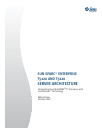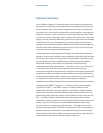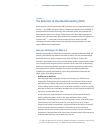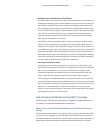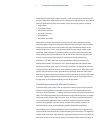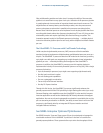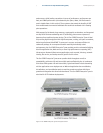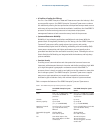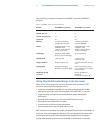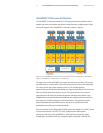2
Th
e
E
vo
l
u
ti
on o
f
Chi
p
M
u
ltith
rea
di
ng
(CMT)
Sun Microsystems, Inc.
Chapter 1
The Evolution of Chip Multithreading (CMT)
By any measure, Sun’s first-generation CMT processors were an unprecedented success.
Sun Fire
™
/ Sun SPARC Enterprise T1000 and T2000 servers based on the UltraSPARC T1
processor with CoolThreads technology won enthusiastic praise, and generated the
fastest product ramp in Sun’s history. Delivering up to five times the throughput in a
quarter of the space and power, these systems even garnered the first ever rebate from
a power utility
1
— a trend that is being repeated across the world. Now CMT
technology is evolving rapidly to meet the constantly changing demands of a wide
range of Web and other applications.
Business Challenges for Web 2.0
Marked by the prevalence of Web services and service-oriented architecture (SOA), the
emerging
Participation Age
promises the ability to deliver rich new content and high-
bandwidth services to larger numbers of users than ever before. Through this
transition, organizations across many industries hope to address larger markets, reduce
costs, and gain better insights into their customers. At the same time, an increasingly
broad array of wired and wireless client devices are bringing network computing into
the everyday lives of millions of people. These trends are redefining datacenter
scalability and capacity requirements, even as they collide with fundamental real
estate, power, and cooling constraints.
•
Building out for Web Scale
Web scale applications engender a new pace and urgency to infrastructure
deployment. Organizations must accelerate time to market and time to service,
while delivering scalable high-quality and high-performance applications and
services. Many need to be able to start small with the ability to scale very quickly,
with new customers and innovative new Web services often implying a doubling of
capacity in months rather than years.
At the same time, organizations must reduce their environmental impact by
working within the power, cooling, and space available in their current
datacenters. Operational costs too are receiving new scrutiny, along with system
administrative costs that can account for up to 40 percent of an IT budget.
Simplicity and speed are paramount, giving organizations the ability to respond
quickly to dynamic business conditions. Organizations are also striving to
eliminate vendor lock-in as they look to preserve previous, current, and future
investments. Open platforms built around open standards help provide maximum
flexibility while reducing costs of both entry and exit.
1.In August of 2006, Pacific Gas and Electric (PG&E) began offering a substantial energy rebate for
purchasing and deploying Sun Fire / Sun SPARC Enterprise T1000 and T2000 servers



